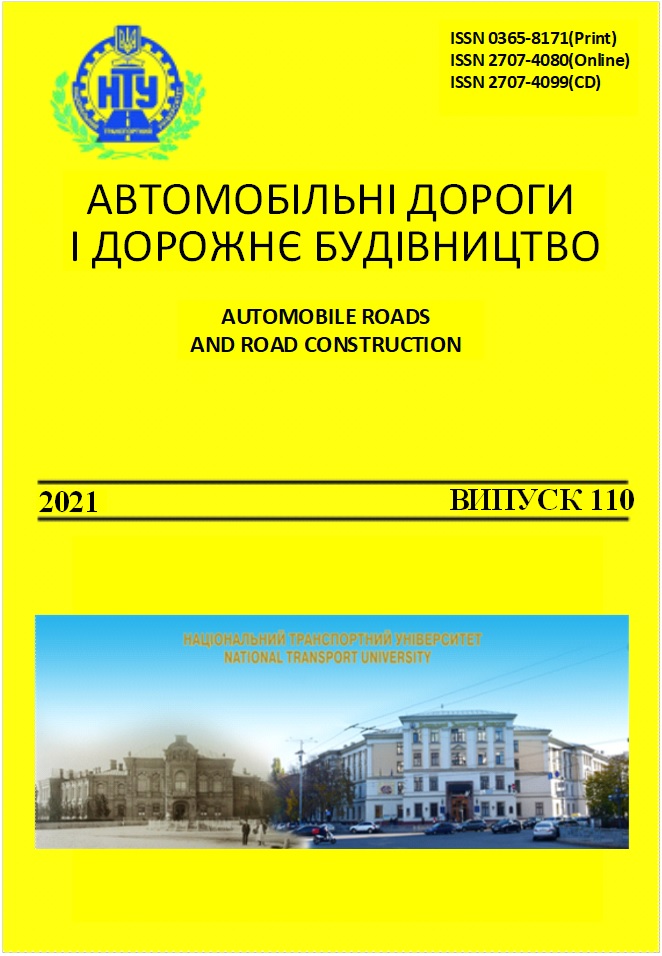Temperature oscillations influence in asphalt concrete layers on stress-deformed condition of road pavement
Serhii Baran, National Transport University, Department of road building materials and chemistry, Senior Lecture, https://orcid.org/0000-0002-3591-9880
Olena Bilobrytska, National Transport University, Department of mathematics, Associate Professor, https://orcid.org/0000-0002-6751-6592
Viktor Bondar, National Transport University, Department of road building materials and chemistry, assistant, https://orcid.org/0000-0002-8382-3824
Oleksandr Kutsman, National Transport University, Department of road building materials and chemistry, Senior Lecturer, https://orcid.org/0000-0002-4510-4570
Lyudmila Shevchuk, National Transport University, assistant, Department of mathematics, https://orcid.org/0000-0002-5748-9527.
Abstract: The durability of asphalt pavement depends on the stress-strain state of the pavement structure, which is significantly affected by temperature fluctuations. The calculation and analysis of the stress-strain state of typical pavement structures with asphalt concrete pavement for roads at different temperatures of their operation are performed. It is established that a significant role in predicting the strength and durability of asphalt pavement is played by temperatures that vary in annual and daily conditions. Tensile stresses in the coating occur not only at low temperatures during the spring waterlogging of soils, but also at other temperatures. Thus, with increasing temperature, the modulus of elasticity of asphalt concrete naturally decreases, which leads to a decrease in the value of horizontal normal tensile stresses of asphalt concrete layers during their bending during transport, but at the same time more significantly reduces the tensile strength of asphalt concrete.
Article language: Ukrainian
Referenses:
- VBN V.2.3-218-186-2004 Sporudy transportu. Dorozhnii odiah nezhorstkoho typu.
- Mozghovoi V.V. Nauchnye osnovy obespechenyia temperaturnoi treshchynostoikosty asfaltobetonnykh pokrytyi: Dys. dokt. tekhn. nauk: 05.22.11 K., 1996. 406 s.
- Brown, N. Thom, P. Sanders A study of grid reinforced asphalt to combat reflection cracking. Association of Asphalt Technologists. 2001, p. 543-571. https://asphalttechnology.org/.
- Models for Predicting Reflection Cracking of Hot-Mix Asphalt Overlays. NCHRP Report, Issue 669, 2010, 70 p. https://trid.trb.org/Results?q=&serial=%22NCHRP%20Report%22
Open Access: http://publications.ntu.edu.ua/avtodorogi_i_stroitelstvo/110/11.pdf
Online publication date: 25.02.2021
Print date: 01.02.2021
